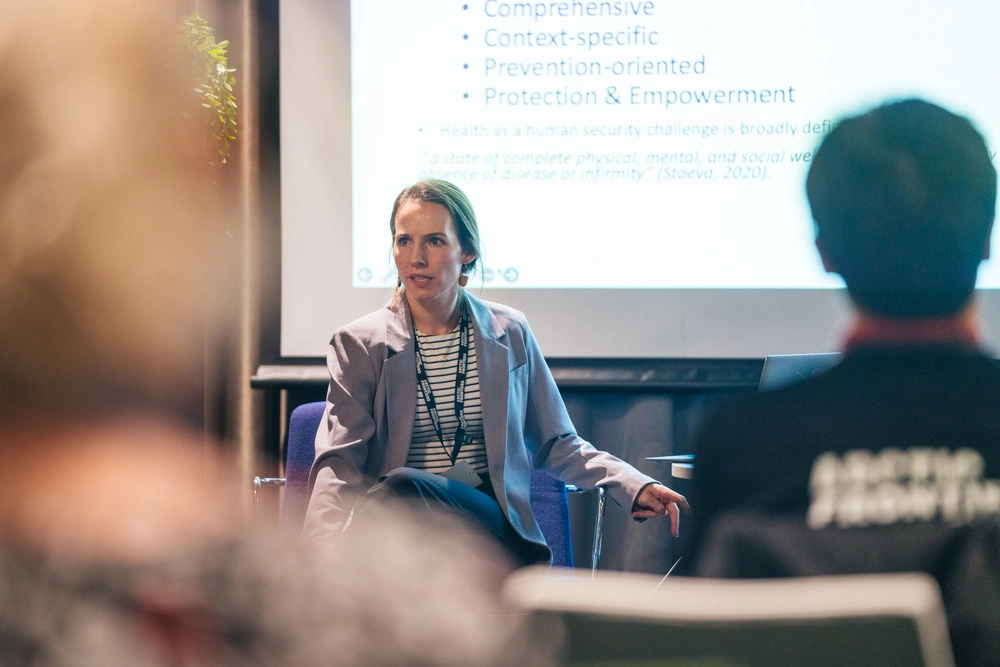The workshop applied Human-Centered Design (HCD) methodologies to identify indicators relevant to community-level health security. Participants from the United States, Canada, and Norway collaborated using creativity and importance/difficulty matrices, highlighting critical infrastructure concerns such as sanitation, transportation, food security, and disaster response. Parry and Duprow emphasized the need for localized risk assessments, as conventional national-level frameworks often overlook the unique vulnerabilities of Arctic communities.
In addition to the workshop, Parry and Duprow presented The Nexus between Human-Centered Design (HCD), Health, and Human Security Challenges in the Arctic. Their research underscored the necessity of integrating HCD principles into health security planning to ensure effective, people-centered solutions.
“Developing a maritime risk index benefits warfighters by enhancing situational awareness, improving mission planning, ensuring operational safety, addressing emerging threats, and providing a strategic edge,” explained Parry. “These tools are essential for navigating the complexities of modern Arctic operations and ensuring mission success in dynamic and often dangerous environments.”
By equipping military and security professionals with data-driven risk assessments and actionable insights, the Ted Stevens Center aims to enhance U.S. operational effectiveness in the Arctic. As Arctic activity continues to grow, workshops like these provide essential strategies for safeguarding both regional communities and national security interests.

